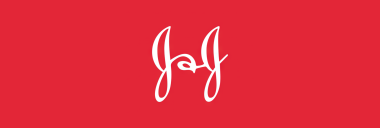Silexion Therapeutics Reports Breakthroughs From SIL-204 Preclinical Studies
Latest preclinical studies reveal significant improvements in stability, efficacy, and KRAS targeting range for next-generation siRNA candidate SIL-204
Key new pre-clinical findings include:
- Significant Anti-tumor Activity: In recent mouse xenograft studies, SIL-204 demonstrated substantial tumor reduction in the human pancreatic tumor cell lines with the KRAS G12D (Panc -1) mutations using the innovative approach of oncogene silencing with siRNA. Previous studies showed this effect using unformulated siRNA with daily injections. The new studies further show this effect with a single administration of SIL-204 encapsulated in an extended-release formulation. Moreover, histopathological examination of treated tumors showed a very high induction of tumor necrosis.
- Improved Formulation In Vivo: The transition from PLGA depot rods to PLGA microparticles (MPs) has resulted in a superior extended-release profile, enhancing the therapeutic potential. We now report in vivo results indicating that our new modified PLGA-microparticle formulation has superior properties over previous extended-release formulations (Loder).
Silexion plans to initiate toxicology studies with SIL-204 within the upcoming months and has plans to advance SIL-204 into Phase 2/3 clinical trials in the first half of 2026, focusing initially on locally advanced pancreatic cancer (LAPC) which has a notoriously high mortality rate. In parallel, the company plans to initiate preclinical studies for SIL-204, in colorectal cancer models.
"These optimizations represent a significant step forward in our development of SIL-204," said Ilan Hadar, Chairman and CEO of Silexion. "The improvements in cellular uptake and the enhanced extended-release formulation further strengthen our confidence in SIL-204's potential. We look forward to commencing our next set of studies in preparation for our Phase 2/3 clinical trial."
About Silexion Therapeutics
Silexion Therapeutics (NASDAQ: SLXN) is a pioneering clinical-stage, oncology-focused biotechnology company developing innovative RNA interference (RNAi) therapies to treat solid tumors driven by KRAS mutations, the most common oncogenic driver in human cancers. The company's first-generation product, LODER™, has shown promising results in a Phase 2 trial for non-resectable pancreatic cancer. Silexion is also advancing its next-generation siRNA candidate, SIL-204, designed to target a broader range of KRAS mutations and showing significant potential in preclinical studies. The company remains committed to pushing the boundaries of therapeutic innovation in oncology, with a focus on improving outcomes for patients with difficult-to-treat cancers. For more information please visit: https://silexion.com
Forward-Looking Statements
This press release contains forward-looking statements within the meaning of the federal securities laws. All statements other than statements of historical fact contained in this communication, including statements regarding Silexion’s business strategy and plans and objectives of management for future operations, are forward-looking statements. These forward-looking statements are generally identified by terminology such as "pro forma", "may", "should", "could", "might", "plan", "possible", "project", "strive", "budget", "forecast", "expect", "intend", "will", "estimate", "anticipate", "believe", "predict", "potential" or "continue", or the negatives of these terms or variations of them or similar terminology. Forward-looking statements involve a number of risks, uncertainties, and assumptions, and actual results or events may differ materially from those projected or implied in those statements. Important factors that could cause such differences include, but are not limited to: (i) Silexion’s market opportunity; (ii) Silexion’s strategy, future operations, financial position, projected costs, prospects and plans; (iii) the impact of the regulatory environment and complexities with compliance related to such environment; (iv) expectations regarding future partnerships or other relationships with third parties; (v) Silexion’s future capital requirements and sources and uses of cash, including Silexion’s ability to obtain additional capital in the future; and (vi) other risks and uncertainties set forth in the documents filed or to be filed with the SEC by the company, including the proxy statement/prospectus filed with the SEC on July 17, 2024. Silexion cautions you against placing undue reliance on forward-looking statements, which reflect current beliefs and are based on information currently available as of the date a forward-looking statement is made. Forward-looking statements set forth herein speak only as of the date they are made. Silexion undertakes no obligation to revise forward-looking statements to reflect future events, changes in circumstances, or changes in beliefs, except as otherwise required by law.
View source version on businesswire.com: https://www.businesswire.com/news/home/20241001946039/en/
Company Contact
Silexion Therapeutics Corp
Ms. Mirit Horenshtein Hadar, CFO
mirit@silexion.com
Investor Contact
ARX | Capital Markets Advisors
North American Equities Desk
silexion@arxadvisory.com
Source: Silexion Therapeutics Corp.








